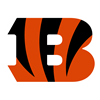This article is part of our Injury Analysis series.
Let the games begin! At long last, real injury reports are beginning to surface as teams prepare for Week 1 of the 2019-20 NFL season. Injuries likely will play a significant role in crowning your league's eventual champion. Injuries in football occur in varying degrees to every imaginable body part, each carrying its own unique treatment plan and recovery timeline. The only injury that has any sort of set protocol is the one most commonly associated with football, the concussion. First implemented in 2009, the NFL concussion protocol has helped guide the return to play for players who have sustained the head injury. With the season set to begin, let's review the steps to complete the return-to-participation protocol.
A concussion occurs when trauma to the head or neck results in a sudden but temporary disruption of basic neurological functions. This can include vision, hearing, facial movement, balance or even memory. Symptoms may clear after a day or two, while others may linger for an extended period of time. Often symptoms will disappear at baseline but return when the injured individual attempts to exercise or perform any exertional activities. Symptoms often vary from person to person, making concussions unpredictable and difficult to manage.
In an attempt to corral these issues and standardize treatment, the league implemented a five-step process that an injured athlete must complete before being cleared to fully practice or participate in a game. The first step is basically a waiting game as the player isn't allowed to do
Let the games begin! At long last, real injury reports are beginning to surface as teams prepare for Week 1 of the 2019-20 NFL season. Injuries likely will play a significant role in crowning your league's eventual champion. Injuries in football occur in varying degrees to every imaginable body part, each carrying its own unique treatment plan and recovery timeline. The only injury that has any sort of set protocol is the one most commonly associated with football, the concussion. First implemented in 2009, the NFL concussion protocol has helped guide the return to play for players who have sustained the head injury. With the season set to begin, let's review the steps to complete the return-to-participation protocol.
A concussion occurs when trauma to the head or neck results in a sudden but temporary disruption of basic neurological functions. This can include vision, hearing, facial movement, balance or even memory. Symptoms may clear after a day or two, while others may linger for an extended period of time. Often symptoms will disappear at baseline but return when the injured individual attempts to exercise or perform any exertional activities. Symptoms often vary from person to person, making concussions unpredictable and difficult to manage.
In an attempt to corral these issues and standardize treatment, the league implemented a five-step process that an injured athlete must complete before being cleared to fully practice or participate in a game. The first step is basically a waiting game as the player isn't allowed to do any activities until he is symptom free. Once he has returned to his baseline, the injured player may resume light aerobic exercise but is not allowed to return to football-related activities. If he remains symptom free following the increase in activity, he can proceed to the next step. Steps 3 and 4 are a gradual buildup of activities, progressing from strength training and controlled sport-specific activity to more moderate noncontact football-related drills. If the symptoms still haven't resurfaced, the player will be examined by an independent neurologist. If the outside party and the team physician both believe the concussion has resolved, the player can be cleared and return to the team's next full practice or game.
The steps may appear simple, but the player often needs multiple days to complete each task. If at any point the concussion-related symptoms return, the player stalls out on that step. For players who have sustained multiple concussions, the effects of the trauma are cumulative. As a result, symptoms are often more significant and last longer. Those trying to receive clearance for Thursday night games see their available recovery time abbreviated and are often hard-pressed to play that week.
Washington tight end Jordan Reed is currently in the concussion protocol after sustaining a concussion in the preseason. Reed has a lengthy history of concussions during his professional career and remains a question mark for Week 1. The 29-year-old did not practice Monday, meaning he has yet to reach Step 5 and is likely still in the early stages of the protocol. He will need to get practice reps in before he can be trusted to contribute on Sunday.
Turf Burns
Amari Cooper  : The Cowboys wideout has returned to practice and did not report any lingering discomfort in his problematic foot. The details surrounding Cooper's injury were a bit confusing but it looks as though he will be good to go for Week 1 against the Giants. He should be utilized in all formats even if he appears on the injury report moving forward.
: The Cowboys wideout has returned to practice and did not report any lingering discomfort in his problematic foot. The details surrounding Cooper's injury were a bit confusing but it looks as though he will be good to go for Week 1 against the Giants. He should be utilized in all formats even if he appears on the injury report moving forward.
Trey Burton : The Bears tight end was limited Monday by a lingering groin injury that could force him to the sidelines for Week 1. He underwent sports hernia surgery in the offseason, though the current problem is reportedly unrelated. He will be day-to-day moving forward, but a shortened week of preparation may make it difficult for him to suit up on Thursday.
: The Bears tight end was limited Monday by a lingering groin injury that could force him to the sidelines for Week 1. He underwent sports hernia surgery in the offseason, though the current problem is reportedly unrelated. He will be day-to-day moving forward, but a shortened week of preparation may make it difficult for him to suit up on Thursday.
A.J. Green : The veteran receiver remains in a walking boot as he recovers from a significant sprained ankle that required surgery. However, there was a bit of good news regarding a potential return, as the Bengals opted not to place him on the injured reserve. As a result, he remains eligible to return in the first eight weeks of the season. He's still expected to miss multiple games, but it appears as though he's trending in the right direction.
: The veteran receiver remains in a walking boot as he recovers from a significant sprained ankle that required surgery. However, there was a bit of good news regarding a potential return, as the Bengals opted not to place him on the injured reserve. As a result, he remains eligible to return in the first eight weeks of the season. He's still expected to miss multiple games, but it appears as though he's trending in the right direction.
DK Metcalf : The Seahawks rookie underwent knee surgery just two weeks ago but has a chance to make his NFL debut in Week 1. The reason for Metcalf's trip to the operating room remains unknown, though the procedure was deemed "minor." It's likely he underwent a simple debridement, a technique used to remove unwanted tissue from the area. While knowing the specifics of the problem would help to better understand what to expect moving forward, it's encouraging to see the receiver back at practice. Still, Metcalf showed a propensity for injury in college, missing time with substantial neck and foot injuries. Tread cautiously here and consider keeping Metcalf on the bench until he has proven he's 100 percent healthy and ready to contribute.
: The Seahawks rookie underwent knee surgery just two weeks ago but has a chance to make his NFL debut in Week 1. The reason for Metcalf's trip to the operating room remains unknown, though the procedure was deemed "minor." It's likely he underwent a simple debridement, a technique used to remove unwanted tissue from the area. While knowing the specifics of the problem would help to better understand what to expect moving forward, it's encouraging to see the receiver back at practice. Still, Metcalf showed a propensity for injury in college, missing time with substantial neck and foot injuries. Tread cautiously here and consider keeping Metcalf on the bench until he has proven he's 100 percent healthy and ready to contribute.
Jerick McKinnon : It will be another lost season for McKinnon, who's expected to undergo another procedure on his surgically repaired knee. McKinnon missed all of last season after tearing his anterior cruciate ligament (ACL) in the preseason and suffered a setback during training camp. He had undergone a platelet-rich plasma injection but will need a more aggressive approach on the injured knee. He has been placed on the IR. Tevin Coleman and Matt Breida assume the top two spots on the 49ers' depth chart.
: It will be another lost season for McKinnon, who's expected to undergo another procedure on his surgically repaired knee. McKinnon missed all of last season after tearing his anterior cruciate ligament (ACL) in the preseason and suffered a setback during training camp. He had undergone a platelet-rich plasma injection but will need a more aggressive approach on the injured knee. He has been placed on the IR. Tevin Coleman and Matt Breida assume the top two spots on the 49ers' depth chart.
Cam Newton : A mild midfoot sprain will not sideline the former MVP to start the season. Newton was an active participant in Panthers practice on Monday and is expected to play Sunday against the Rams. Newton struggled in the second half of last season due to shoulder issues that were surgically addressed in the offseason. He could be in line for a bounce-back campaign and remains a viable fantasy quarterback.
: A mild midfoot sprain will not sideline the former MVP to start the season. Newton was an active participant in Panthers practice on Monday and is expected to play Sunday against the Rams. Newton struggled in the second half of last season due to shoulder issues that were surgically addressed in the offseason. He could be in line for a bounce-back campaign and remains a viable fantasy quarterback.
John Ross : The Bengals carefully handled Ross' recovery from a hamstring strain, limiting his activity for training camp and preseason. The approach appears to have worked, as Ross is reportedly up to full speed and is expected to play in Week 1 against the Seahawks. The team likely will limit his initial workload, and he's likely a week or two away from being a reliable fantasy option.
: The Bengals carefully handled Ross' recovery from a hamstring strain, limiting his activity for training camp and preseason. The approach appears to have worked, as Ross is reportedly up to full speed and is expected to play in Week 1 against the Seahawks. The team likely will limit his initial workload, and he's likely a week or two away from being a reliable fantasy option.










